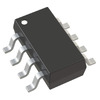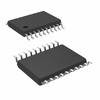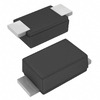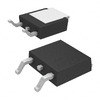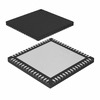IRS2092S Amplifier: Specifications, Features, and Applications
This article delves into the details of the IRS2092S, exploring its components, practical implementation, and extensive applications in audio systems. It provides an exposition of its functionality and advantages, this article aims to elucidate how the IRS2092S encapsulates a remarkable blend of innovative technology and practical utility, making it a formidable choice for everyone looking to push the boundaries of audio amplifier design.Catalog

What is the IRS2092S?
The IRS2092S is an advanced Class D audio amplifier driver featuring PWM modulation and extensive protection capabilities. When paired with two external MOSFETs and a few supporting components, it enables the development of a complete Class D amplifier system known for its robust protection and efficiency. International Rectifier's pioneering noise isolation technology combines a high-current gate drive stage with a high-speed, low-noise error amplifier on a single chip.
IRS2092S Equivalent
• IRS2093
Pinout of IRS2092S

VAA: Floating Input Positive Supply
The VAA pin serves as the floating input positive supply, ensuring the power input is stable enough to keep the chip humming with purpose. By delivering a reliable positive voltage, the VAA pin helps the amplifier maintain its steadfast performance.
GND: Floating Input Supply Return
The GND pin provides a return path for the floating input supply, anchoring the voltage levels within the chip. This stable reference point is good for precise signal processing, enabling accurate sound reproduction.
IN-: Analog Inverting Input
The IN- pin is the portal for the analog inverting input, channeling the inverting signal into the amplifier circuit. It enables differential signal processing, reducing noise, and enhancing signal clarity for the amplifier's pristine audio output.
COMP: Phase Compensation and Comparator Input
The COMP pin takes on the dual role of phase compensation and comparator input, a guardian of stability and performance. By fine-tuning the phase response, it mitigates oscillations and optimizes the amplifier's audio fidelity across different scenarios.
CSD: Shutdown Timing Capacitor
The CSD pin interfaces with a capacitor that dictates the shutdown timing, a sentinel against overcurrent conditions. By enabling a controlled shutdown, it fortifies the amplifier's durability and robustness, extending its operational life.
VSS: Floating Input Negative Supply
The VSS pin ties into the floating input negative supply, balancing the positive supply to foster reliable amplifier operation. A consistent negative voltage is as important as its counterpart for harmonious performance.
VREF: 5V Reference Voltage to Program OCSET Pin
The VREF pin supplies a 5V reference voltage, a core for programming the OCSET pin. This reference acts as a benchmark, setting the overcurrent threshold, safeguarding the amplifier from potential damage caused by excessive current flow.
OCSET: Low Side Overcurrent Threshold Setting
The OCSET pin allows setting the low side overcurrent threshold, a protector in disguise. Adjusting the threshold prevents the amplifier from straying into unsafe current levels, securing it against overcurrent episodes.
DT: Deadtime Program Input
The DT pin enables the programming of deadtime intervals, those brief yet pauses ensuring high and low side transistors do not conduct simultaneously. Proper deadtime calibration is good for avoiding short-circuits, boosting the amplifier's efficiency and reliability.
COM: Low Side Supply Return
The COM pin facilitates the return path for the low side supply, ensuring a stable ground reference for the low side driver circuitry. This pin is key to maintaining consistent operation of the low side components.
LO: Low Side Output
The LO pin handles the low side output, driving the low side transistor and orchestrating the switching operations. Its role is need in amplifying the input signal effectively.
VCC: Low Side Supply
The VCC pin powers the low side components of the chip, enabling stable operation. This power supply is use for the amplifier's performance, ensuring optimal functionality and reliability.
VS: High Side Floating Supply Return
The VS pin acts as the return path for the high side floating supply, providing a stable high side reference. This ensures balanced operation of the high side driver, a linchpin for overall stability.
HO: High Side Output
The HO pin delivers the high side output, steering the high side transistor. Its proper function is central to the amplifier’s efficiency and enduring performance.
VB: High Side Floating Supply
The VB pin furnishes the high side floating supply, energizing the high side driver components. A stable supply here reduces noise levels and supports effective operation, elevating the amplifier's acoustic standards.
CSH: High Side Overcurrent Sensing Input
The CSH pin takes on the task of high side overcurrent sensing, vigilantly monitoring current through the high side transistor. By providing feedback to prevent overcurrent conditions, it plays a role in the amplifier’s safety and dependability.
IRS2092S Symbol, Footprint, and CAD Model
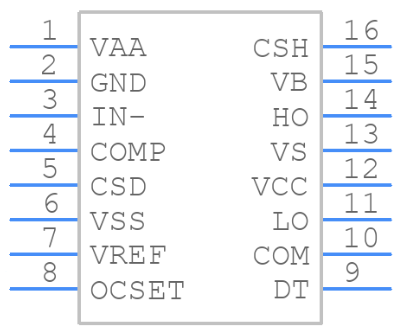
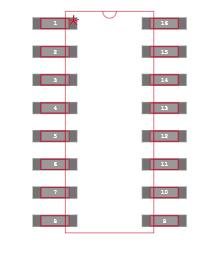
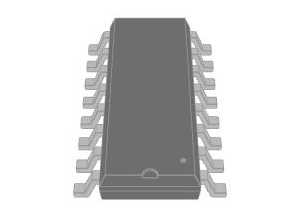
Features of IRS2092S
Integrated Analog Input Class D Audio Amplifier Driver
The IRS2092S incorporates an analog input Class D audio amplifier driver within a compact 16-pin configuration.This layout is space-efficient, aligning with the miniaturization trends in electronics. This design maintains high fidelity for advanced device designs that prioritize sound quality without sacrificing physical constraints.
Floating Inputs for Simplified Half-Bridge Integration
The floating input architecture facilitates seamless integration with half-bridge setups. It simplifies circuit design and enhances customization flexibility. Many benefit from this by creating modular, reliable components that cater to diverse audio system requirements.
Programmable Bidirectional Overcurrent Protection with Self-Reset
Featuring programmable bidirectional overcurrent protection that self-resets, the IRS2092S fortifies system durability. It prevents potential damage from current overloads autonomously. This aligns with protection strategies seen in applications where system integrity is a priority.
Adjustable Deadtime for Improved THD Performance
Adjustable deadtime prioritizes achieving superior Total Harmonic Distortion (THD) performance. It allows for precise circuit tuning, ensuring cleaner audio outputs. Such fine-tuning is use for meeting high-fidelity audio standards found in premium audio equipment.
Click Noise Reduction during Start and Stop Phases
The IRS2092S minimizes click noise during start and stop phases. This reduces unwanted auditory artifacts. It supports the audio industry's goal of delivering refined sound quality and smooth operational transitions for your satisfaction.
High Noise Immunity
High noise immunity ensures the IRS2092S operates consistently in electrically noisy environments. This is useful in industrial settings or urban areas where electromagnetic interference is common. Prioritizing noise immunity bolsters system reliability and confidence.
±100V Ratings Enabling up to 500W Output Power
The IRS2092S’s ±100V ratings support output power up to 500W. High-voltage capacity accommodates a broad variety of uses to audio systems.
Operation Up to 800 kHz
Capable of operating up to 800 kHz, the IRS2092S supports high-frequency switching for efficient Class D amplification. High switching frequencies enhance audio performance and efficiency, a standard in modern high-performance audio amplifiers.
RoHS Compliance
The IRS2092S meets RoHS compliance, adhering to environmental standards by limiting hazardous substances. This compliance shows a commitment to sustainability and aligns with global regulations. It reflects the industry's movement towards eco-friendly practices.
Applications of IRS2092S
Home Theater Systems
The IRS2092S elevates audio clarity and power efficiency in home theater systems. When integrated, it allows manufacturers to deliver immersive audio with reduced power consumption. Advanced home theater setups often demand high fidelity and minimal distortion. The IRS2092S meets these needs due to its sophisticated modulation techniques.
Mini Component Stereo Systems
Mini component stereo systems seek a compact yet powerful solution for high-quality sound. The IRS2092S caters to this need by offering superior power output in limited space. It becomes advantageous in modern, space-constrained living environments where performance is great. Practical observations indicate that these systems enjoy prolonged operational life due to the efficient thermal management provided by the IRS2092S.
Powered Speaker Systems
Powered speaker systems gain notably from the IRS2092S's capability to manage high power levels while maintaining audio integrity. These systems are used extensively in consumer markets, where clarity and reliability are needed. Practical deployment has shown that incorporating this driver into powered speakers enhances audio reproduction. This makes it ideal for studio monitoring, live performances, and daily listening.
General-Purpose Audio Power Amplifiers
In general-purpose audio power amplifiers, the IRS2092S delivers consistent performance and durability. Its application showcases its flexibility and ability to handle diverse audio requirements effortlessly.
Schematic Diagram of IRS2092S
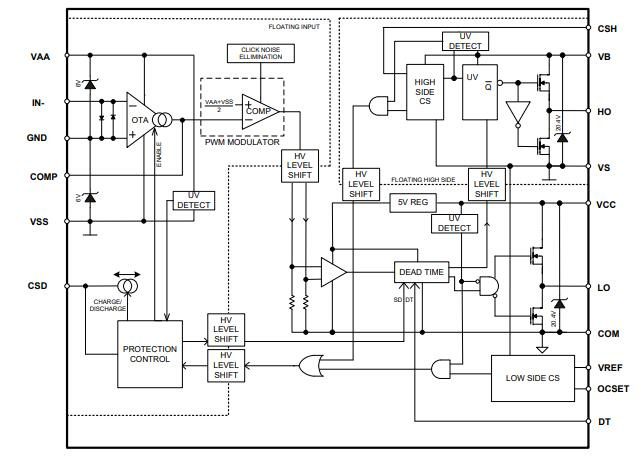
Utilizing IRS2092S
The IRS2092S brings together all the integral components of a Class D amplifier within a single, efficient IC. It necessitates only minimal external components for optimal operation. The Operational Transconductance Amplifier (OTA) operates the input stage with a +/- supply, effectively converting the input signal into an ideal format for amplification. This conversion process leverages well-established principles of analog signal processing, ensuring accurate and high-fidelity sound reproduction.
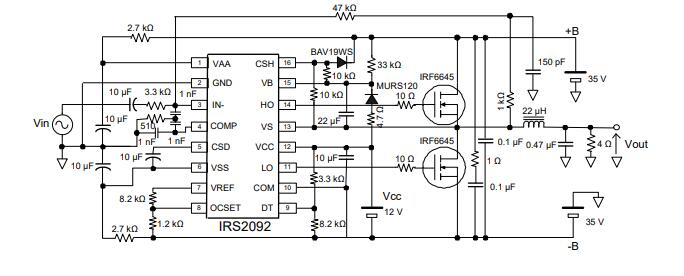
IRS2092S Specifications
|
Type |
Parameter |
|
Mounting Type |
Surface Mount |
|
Surface Mount |
YES |
|
Packaging |
Tube |
|
Part Status |
Discontinued |
|
Number of Terminations |
16 |
|
Type |
Class D |
|
Voltage - Supply |
10V - 18V |
|
Terminal Form |
GULL WING |
|
Number of Functions |
1 |
|
Temperature Max (°C) |
NOT SPECIFIED |
|
JESD-30 Code |
R-PDSO-G16 |
|
Output Type |
1-Channel (Mono) |
|
Power Supplies |
12V |
|
Number of Channels |
2 |
|
Features |
Depop, Short-Circuit Protection |
|
Height Seated (Max) |
1.75mm |
|
RoHS Status |
RoHS Compliant |
|
Package / Case |
18-SOIC (0.154", 3.90mm Width) |
|
Operating Temperature |
-40°C - 125°C TA |
|
Published |
2007 |
|
Moisture Sensitivity Level (MSL) |
2 (1 Year) |
|
ECN Code |
EAR99 |
|
HTS Code |
8542.33.00.01 |
|
Peak Reflow Temperature (Cel) |
NOT SPECIFIED |
|
Terminal Pitch |
1.72mm |
|
Base Part Number |
IRS2092SPBF |
|
Qualification Status |
Not Qualified |
|
Supply Voltage-Min (Vsup) |
10V |
|
Supply Voltage-Max (Vsup) |
18V |
|
Bandwidth |
20 kHz |
|
Length |
9.89mm |
|
Width |
3.905mm |
IRS2092S Package
The IRS2092S amplifier is presented in a sleek 16-pin SOIC narrow package, designed for outstanding thermal efficacy and easy manufacturability. This surface-mount marvel ensures that parasitic inductance and capacitance are minimized, elevating high-frequency performance. The packaging’s compact dimensions suit applications where every millimeter of board space counts. Its integrated thermal pad underneath enhances heat dissipation, a factor for long-term reliability. The design harmonizes mechanical strength with electrical performance.
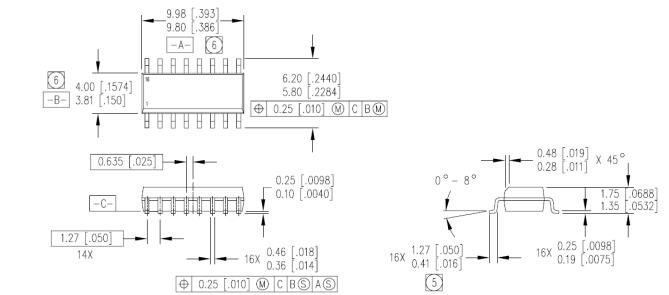
IRS2092S Manufacturer
Infineon Technologies, a brand that evolved from Siemens Semiconductors, stands out as a leading global entity in of semiconductor solutions. Infineon's reputation is built on its innovative spirit and advanced technology, making notable contributions to sectors such as automotive, industrial, consumer electronics, and security. Infineon Technologies' prominence in the semiconductor industry stems from decades of relentless innovation and a forward-thinking approach. Reflecting on their evolution and contemporary impact provides a deeper appreciation of their contributions. As technology needs continue to advance, Infineon's strategic vision ensures they stay ahead, driving future innovations.
Frequently Asked Questions [FAQ]
1. How does the IRS2092(S) work?
The IRS2092(S) integrates dual overcurrent and shoot-through protection functionalities, forming a sophisticated Class D amplifier. It also includes undervoltage lockout (UVLO) protection for three bias supplies. When paired with two external MOSFETs and minimal external components, it delivers high efficiency and robust performance. This seamless integration often results in greater reliability and simplified design processes, reflecting the practice of optimizing resources while maximizing output.
2. Is there a bus pumping effect with the IRS2092?
No, there is no bus pumping effect when the amplifier operates in mono full-bridge mode. This feature ensures stable and clean performance, particularly in demanding audio applications. Such stability can be great in audio engineering, where consistent power supply behavior directly affects sound quality and system reliability.
3. What is the damping factor of the IRS2092S?
The damping factor in the reference design is rated at 120 @1kHz & 4 ohm. This high rating indicates a well-controlled speaker movement, which is good for precise audio reproduction. Aligning with best practices in audio design, maintaining a high damping factor helps to accurately reproduce the original sound.
4. Why is my IRS2092 not reaching full power?
The reference design of the IRS2092 is calibrated for a 1 VRMS input, which may be higher than the output of most audio sources. As a result, the amplifier may achieve full power prematurely. Adjusting the voltage gain can resolve this issue and optimize performance. This adjustment is akin to fine-tuning instruments to suit specific contexts, ensuring that the amplifier’s capabilities align perfectly with the audio source requirements and intended usage scenarios.
About us
ALLELCO LIMITED
Read more
Quick inquiry
Please send an inquiry, we will respond immediately.
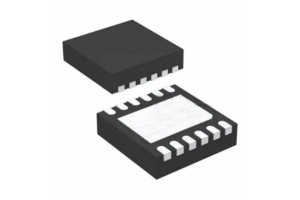
FT234XD-R USB Guide: Pinout, Functional Block Diagram, and Alternatives
on October 15th

P82B96 Bipolar IC Guide: Pin Details, 3D Model, and Datasheet Analysis
on October 15th
Popular Posts
-

What is GND in the circuit?
on January 1th 2824
-

RJ-45 Connector Guide: RJ-45 Connector Color Codes, Wiring Schemes, R-J45 Applications, RJ-45 Datasheets
on January 1th 2399
-

Fiber Connector Types: SC Vs LC And LC Vs MTP
on January 1th 2009
-

Understanding Power Supply Voltages in Electronics VCC, VDD, VEE, VSS, and GND
on November 5th 1758
-

Comparison Between DB9 and RS232
on January 1th 1723
-

What Is An LR44 Battery?
Electricity, that ubiquitous force, quietly permeates every aspect of our daily lives, from trivial gadgets to life-threatening medical equipment, it plays a silent role. However, truly grasping this energy, especially how to store and efficiently output it, is no easy task. It is against this background that this article will focus on a type of coin cell battery that may seem insignificant on the...on January 1th 1674
-

Understanding the Fundamentals:Inductance Resistance, andCapacitance
In the intricate dance of electrical engineering, a trio of fundamental elements takes center stage: inductance, resistance, and capacitance. Each bears unique traits that dictate the dynamic rhythms of electronic circuits. Here, we embark on a journey to decipher the complexities of these components, to uncover their distinct roles and practical uses within the vast electrical orchestra. Inductan...on January 1th 1613
-

CR2430 Battery Comprehensive Guide: Specifications, Applications and Comparison to CR2032 Batteries
What is CR2430 battery ?Benefits of CR2430 BatteriesNormCR2430 Battery ApplicationsCR2430 EquivalentCR2430 VS CR2032Battery CR2430 SizeWhat to look for when buying the CR2430 and equivalentsData Sheet PDFFrequently Asked Questions Batteries are the heart of small electronic devices. Among the many types available, coin cells play a crucial role, commonly found in calculators, remote controls, and ...on January 1th 1492
-

CR2450 vs CR2032: Can The Battery Be Used Instead?
Lithium manganese batteries do have some similarities with other lithium batteries. High energy density and long service life are the characteristics they have in common. This kind of battery has won the trust and favor of many consumers because of its unique safety. Expensive tech gadgets? Small appliances in our homes? Look around and you'll see them everywhere. Among these many lithium-manganes...on January 1th 1469
-

What Is RF and Why Do We Use It?
Radio Frequency (RF) technology is a key part of modern wireless communication, enabling data transmission over long distances without physical connections. This article delves into the basics of RF, explaining how electromagnetic radiation (EMR) makes RF communication possible. We will explore the principles of EMR, the creation and control of RF signals, and their wide-ranging uses. The article ...on January 1th 1438



